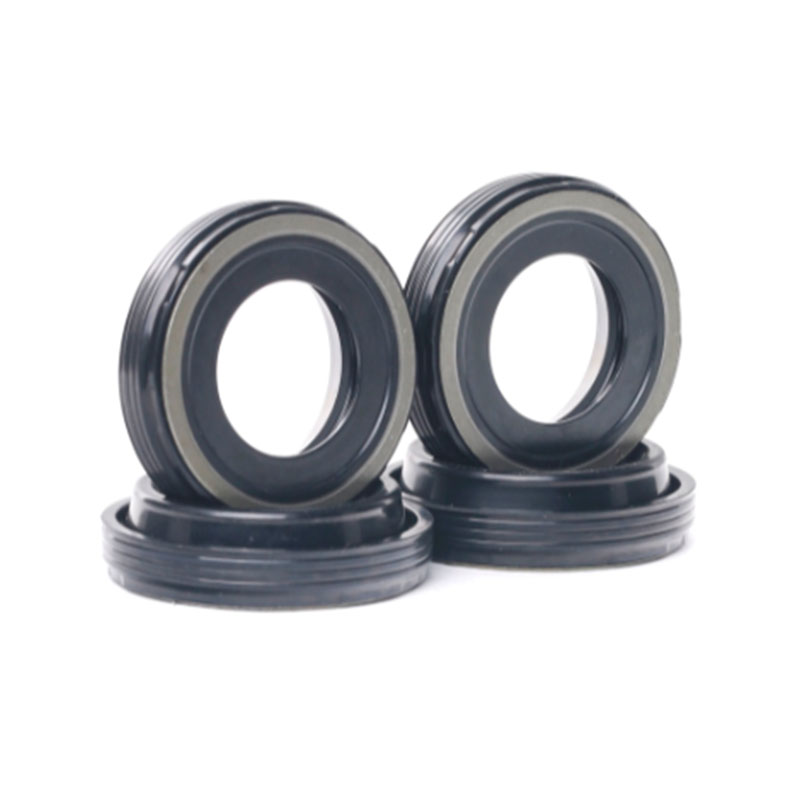oil seal 30x40x7
Understanding Oil Seals A Closer Look at the 30x40x7 Specification
Oil seals, also known as lip seals or rotary shaft seals, play a crucial role in machinery by preventing the leakage of oils and lubricants while simultaneously keeping contaminants out. One specific size that is commonly encountered in various industrial and automotive applications is the 30x40x7 oil seal. This designation refers to the seal's dimensions, measured in millimeters 30 mm (inner diameter), 40 mm (outer diameter), and 7 mm (thickness). Understanding the construction, function, and applications of this type of oil seal is essential for proper maintenance and selection for specific uses.
Construction of the 30x40x7 Oil Seal
The 30x40x7 oil seal typically consists of two main components the sealing lip and the body. The sealing lip is designed to interface directly with the rotating shaft. Made from durable materials such as nitrile rubber (NBR), fluorocarbon (FKM), or polyurethane, the lip provides flexibility and resilience, ensuring a reliable seal under various operating conditions. The design of the lip often includes a garter spring, which helps maintain contact with the shaft, compensating for any wear or thermal expansion that may occur over time.
The body of the oil seal is generally made from rigid materials such as metal or reinforced polymers, providing structural integrity and ensuring that the seal maintains its shape. This part is crucial for easy installation and a secure fit within the housing used in automotive and industrial applications.
Functionality of the Oil Seal
The primary function of the 30x40x7 oil seal is to contain lubricants within a defined area while providing a barrier against external contaminants such as dirt, dust, and moisture. This sealing capability is particularly important in dynamic applications where the shaft is continuously rotating. The design of the seal must account for various factors, including pressure differentials, temperature ranges, and the type of lubrication being used.
oil seal 30x40x7

When installed correctly, the oil seal prevents leakage of oil from the system, which is vital for maintaining proper lubrication and reducing wear on moving parts. Not only does the oil seal extend the life of machinery by keeping lubricants in and contaminants out, but it also helps in maintaining the operational efficiency of engines and systems by ensuring that the right amount of lubricant reaches critical areas.
Applications of the 30x40x7 Oil Seal
The versatility of the 30x40x7 oil seal makes it suitable for a wide range of applications. It is commonly found in automotive components such as engines, transmissions, and differentials. In these contexts, oil seals are used to secure the engine oil, gear oil, or transmission fluid, ensuring seamless operation and minimizing maintenance requirements.
In addition to automotive use, these oil seals are also prevalent in industrial machinery, agricultural equipment, and even household appliances. Wherever there is a rotating shaft and a need for lubrication, the 30x40x7 oil seal can be an ideal solution. Its compact size allows for easy installation in confined spaces and contributes to the overall efficiency of the machinery.
Conclusion
In summary, the 30x40x7 oil seal is a vital component in various mechanical systems, offering excellent sealing capabilities to enhance the performance and longevity of machinery. Understanding its construction, functionality, and appropriate applications can significantly aid in maintenance practices and decision-making when selecting seals for different uses. As industries evolve and equipment becomes more sophisticated, the role of quality oil seals like the 30x40x7 remains indispensable, ensuring that machinery operates smoothly and effectively for years to come.
-
Simplifying Oil Changes: A Comprehensive Guide to Oil Drain Plugs and Their Variants
News Aug.04,2025
-
Mastering Oil Drain Maintenance: Solutions for Stripped, Worn, and Upgraded Oil Plugs
News Aug.04,2025
-
Fixing Oil Pan Plug Issues: Leaks, Stripped Nuts, and the Right Replacement Solutions
News Aug.04,2025
-
Everything You Need to Know About Oil Drain Plugs: Sizes, Fixes, and Upgrades
News Aug.04,2025
-
Choosing the Right Oil Drain Plug: A Guide to Sizes, Materials, and Drain Innovations
News Aug.04,2025
-
A Complete Guide to Automotive Drain Plugs: Types, Problems, and Innovative Solutions
News Aug.04,2025
-
The Ultimate Guide to Car Repair Kits: Tools and Essentials Every Driver Should Own
News Aug.01,2025
Products categories















